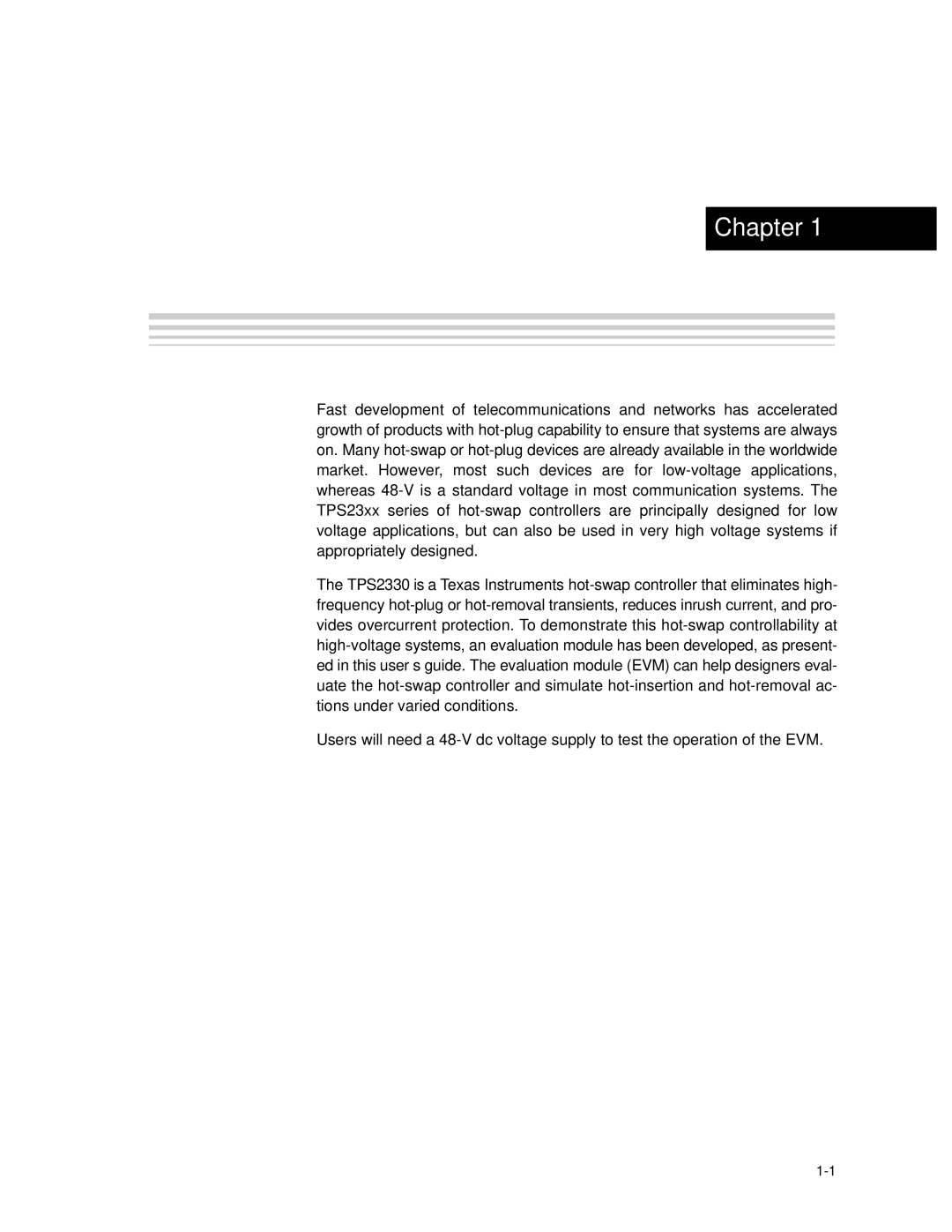TPS2330 specifications
Texas Instruments (TI) has established itself as a leader in developing advanced power management solutions. Among its array of products, the TPS2330 stands out as a highly efficient power-path controller designed for various applications, including telecommunications, networking, and embedded systems. This device is a popular choice for engineers seeking an effective way to manage power availability from primary and backup sources.One of the defining features of the TPS2330 is its dual input control. The controller is designed to manage two independent power sources, providing a seamless transition between them. This capability is critical in applications where reliability is paramount, as it allows for a primary power source (like an adapter) to be complemented by a secondary source (like a battery). The TPS2330 ensures that the load is always powered, even if the primary source fails, allowing for uninterrupted operation.
The TPS2330 also incorporates a sophisticated power-path management technology, which optimizes the flow of power to the load while minimizing losses. This technology enables efficient use of the connected power sources, ensuring that the highest priority source is utilized while maintaining flexibility. The device supports hot-swappable inputs, meaning users can connect or disconnect power sources without interrupting the operation of the circuit.
Another significant characteristic of the TPS2330 is its low quiescent current, which is essential for battery-powered applications. The device's efficiency minimizes power consumption during standby mode, extending battery life significantly. This feature is particularly valuable in IoT devices and portable electronics where power conservation is crucial.
Furthermore, the TPS2330 is built with a robust set of protections to enhance reliability. It has built-in overvoltage, undervoltage, and overcurrent protection, which safeguard connected devices from potential damage. These features are vital for preventing failures in critical applications, helping designers build more resilient systems.
In terms of ease of use, the TPS2330 has a simple design with straightforward external component requirements. This simplicity reduces development time, allowing engineers to quickly integrate the controller into their designs. The device also comes with a wide operating voltage range, making it versatile enough to meet various application needs.
Ultimately, Texas Instruments' TPS2330 is a powerful solution for managing dual power sources with reliability, efficiency, and protection once considered essential in modern electronic design. Its innovative features and technologies make it a go-to choice for engineers looking to enhance their power management designs effectively.

